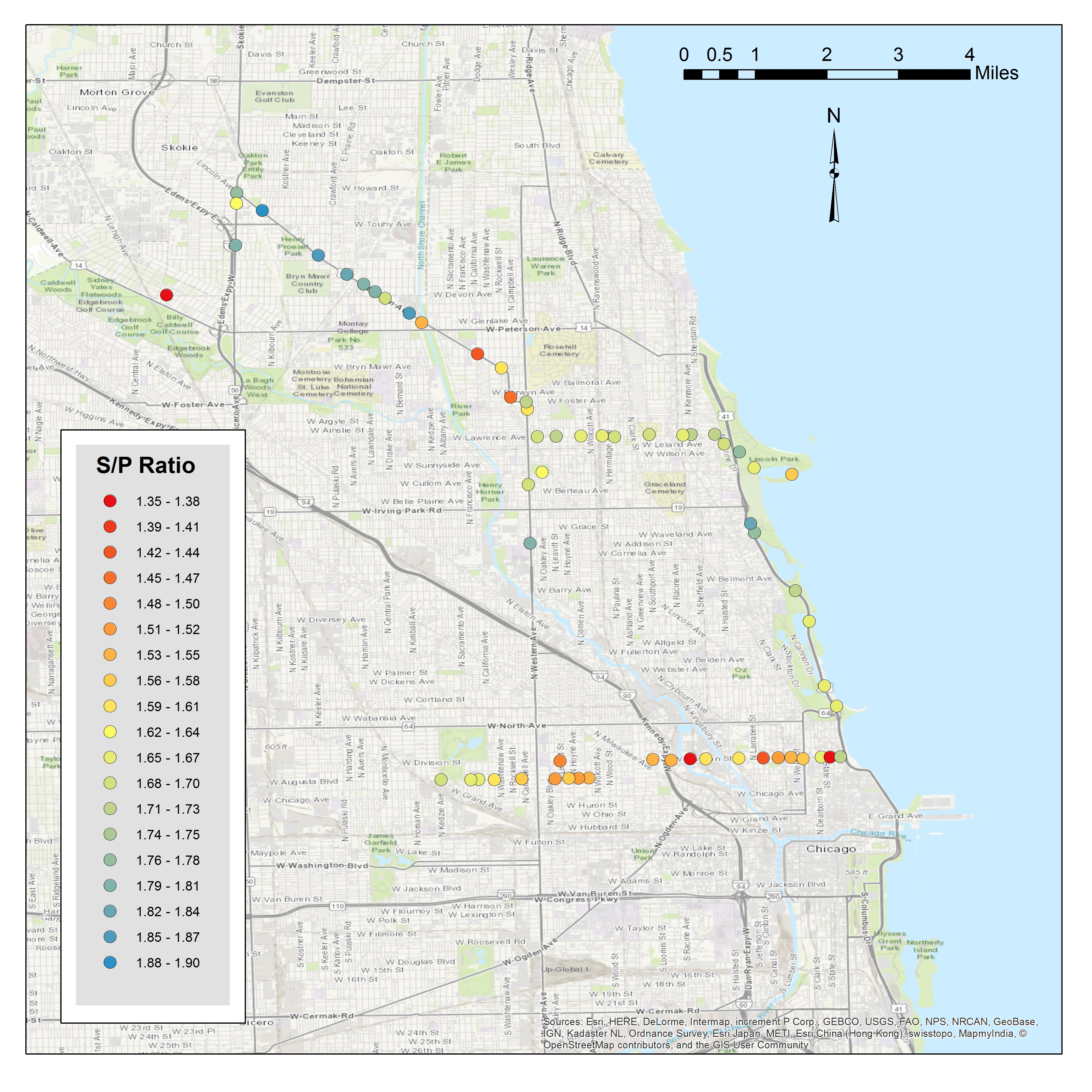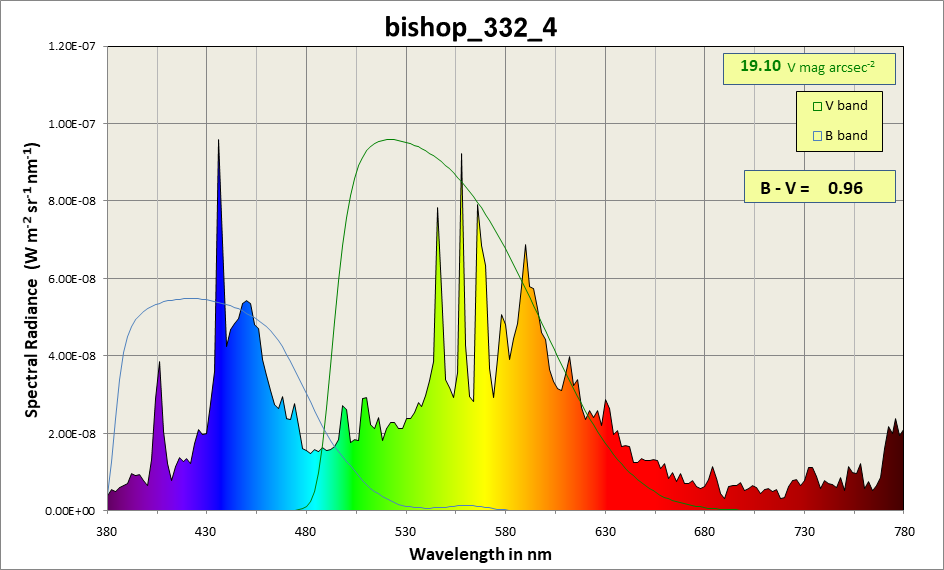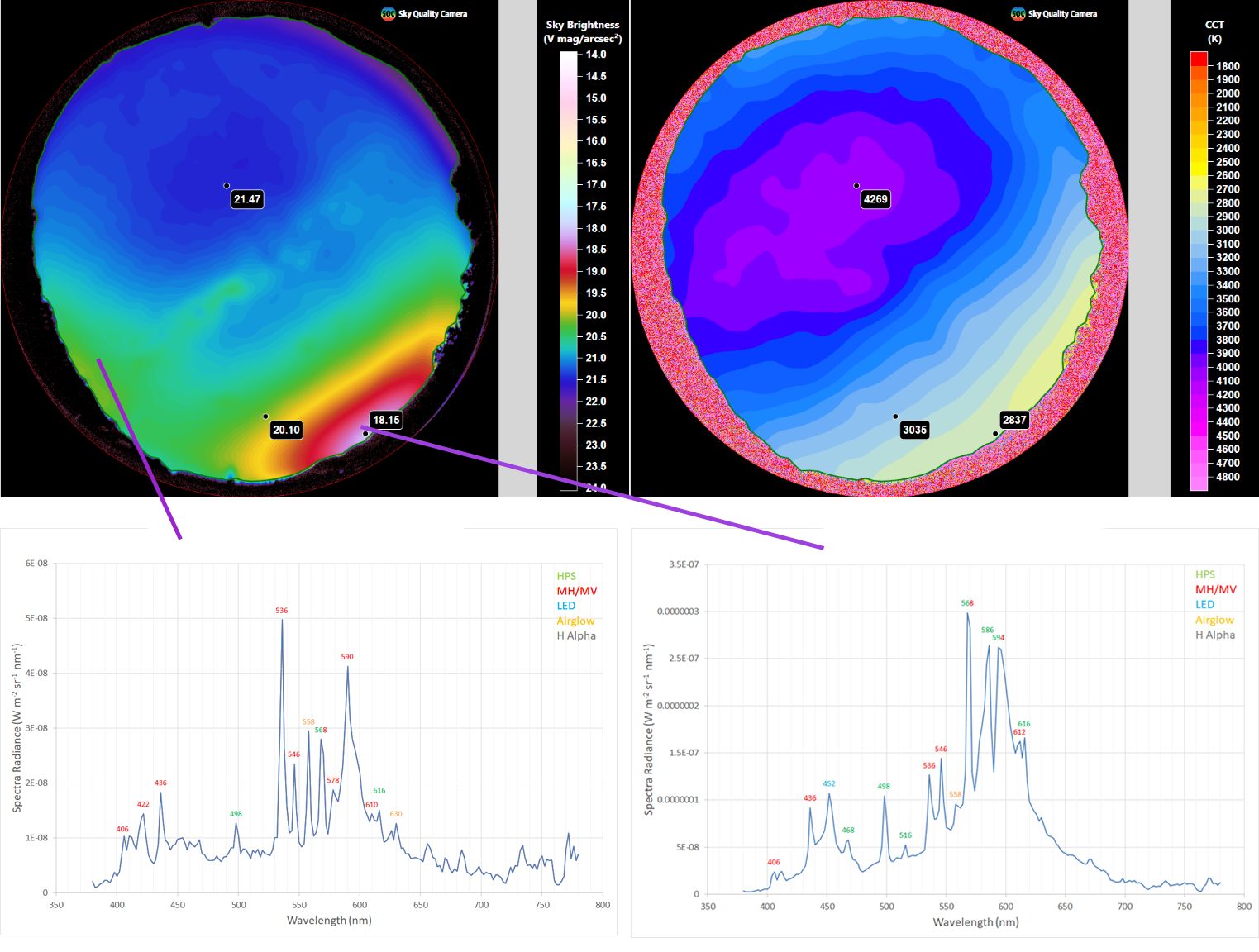The spectral power distribution of sky glow allows for the identification of stray outdoor light types and their relative contribution to light pollution. Night Sky Metrics offers measurements calibrated in absolute spectral radiance units, allowing for the calculation of sky brightness in a variety of photometric systems by synthetic photometry. Important indicators of environmental impact may also be obtained such as scotopic/photopic or melanopic/photopic ratios. Single value metrics of sky glow color such as CCT or astronomical B minus V are accurately calculated.
One example utilizes the device to measure the effect of atmospheric extinction on the spectrum of sky glow from a major city. A series of observations at a point distant from the city from horizon to zenith at a constant azimuth reveal the changes in spectral content, and the relative contribution of the natural airglow as the observations approach the zenith.
Another example demonstrates the relative contribution from different light sources within a city where lighting retrofits from HPS to LED are being performed. Zenith skyglow measurements are used in a large metropolitan area.




